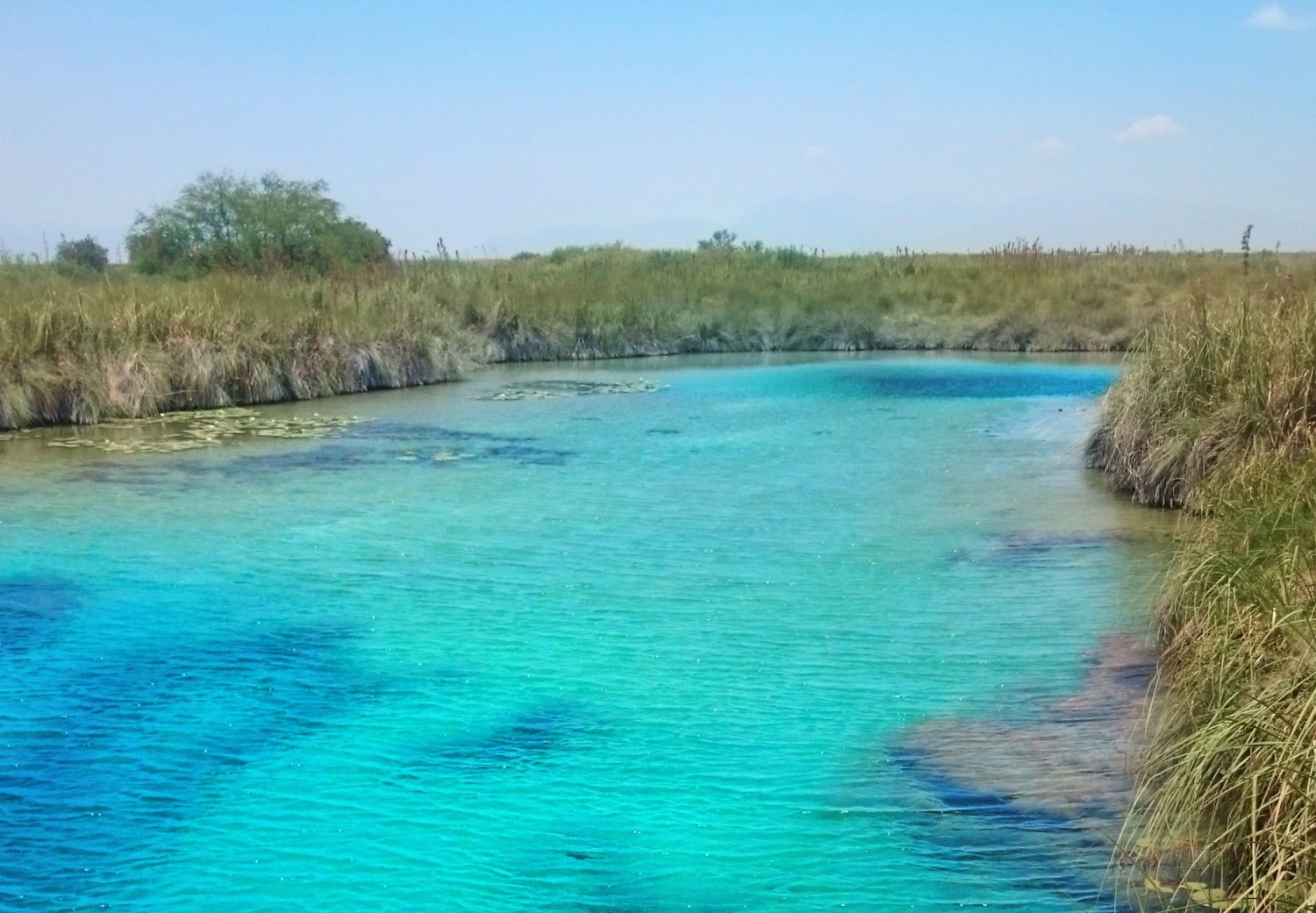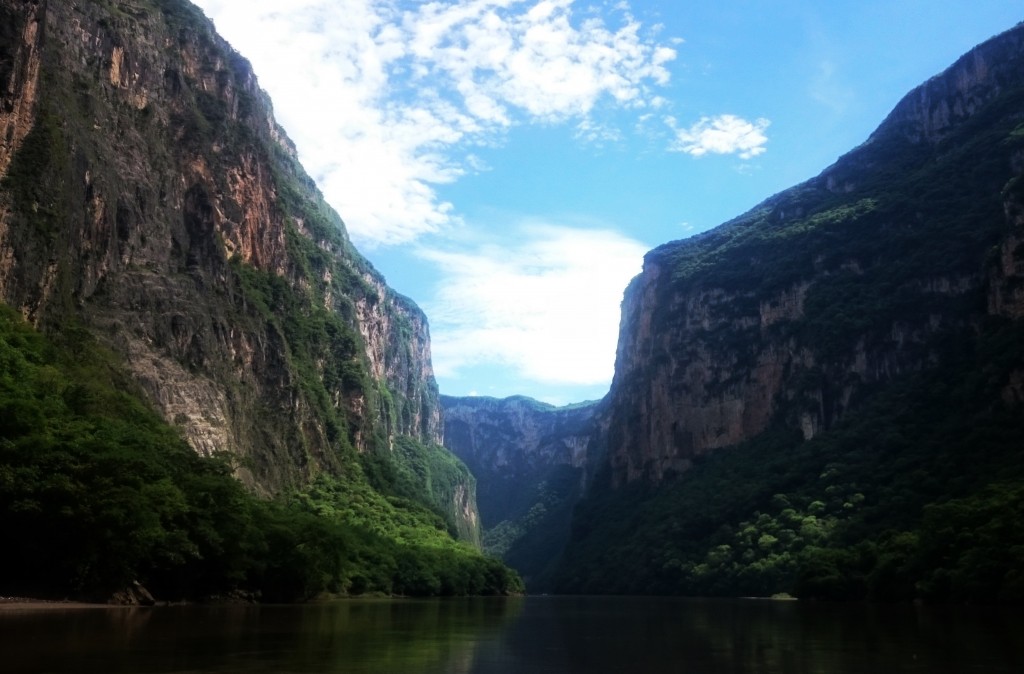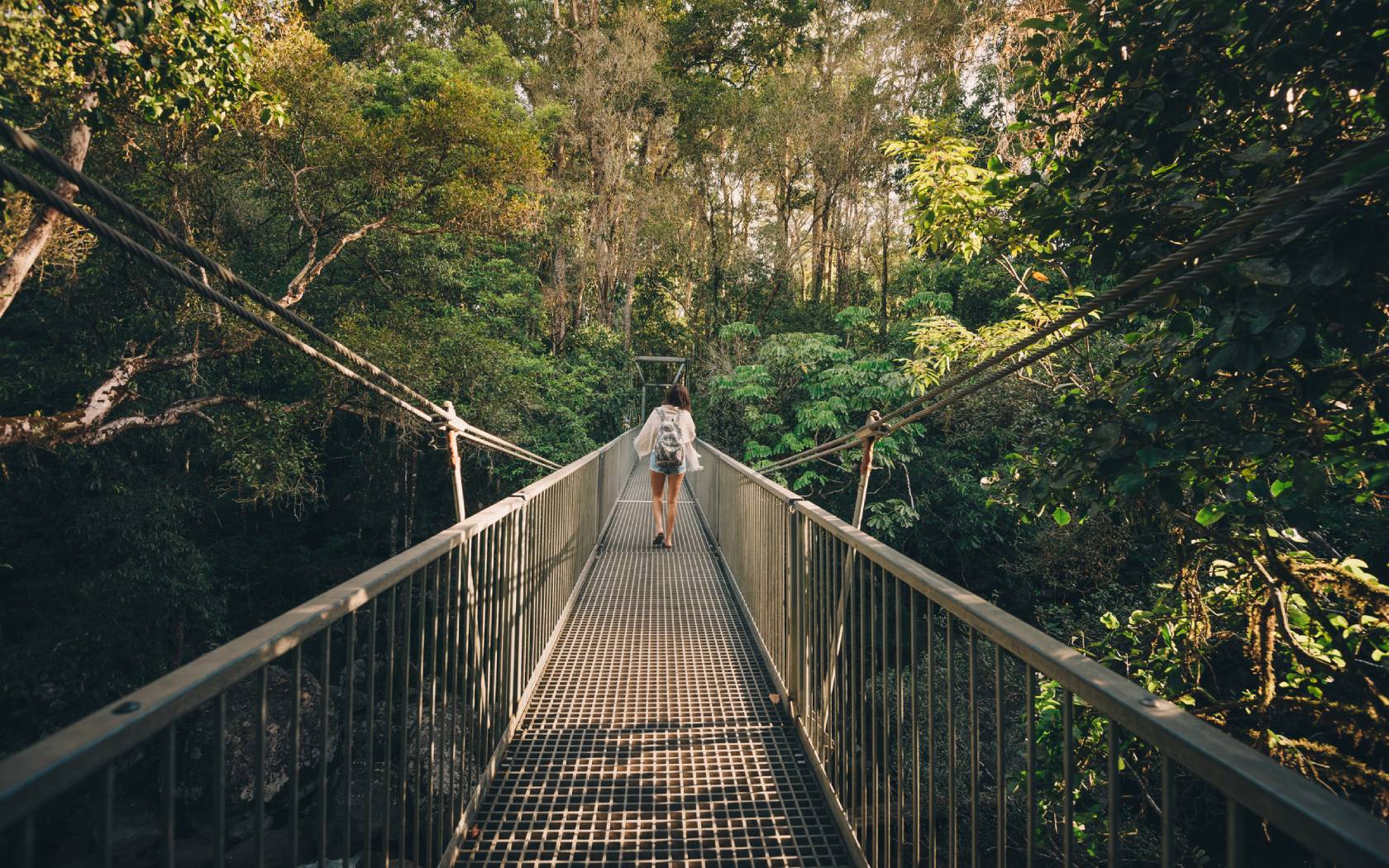10 Incredible Places In Mexico That You Probably Haven’t Heard Of

Martina is a travel writer who has been published on…
Mexico is a sensory experience. It’s a place of bright colours, striking landscapes, charming people, and to-die-for food. It’s also a place of stark contrasts. A few hours on a bus can take you from azure Caribbean waters to cobblestoned highland towns, from cactus strewn deserts to steamy jungles studded with ancient temples.
[related_articles]27172,27556,27105[/related_articles]One of the most satisfying parts of any trip is getting to a couple of lesser-known destinations – the ones that’re a little way off the main trail. These might not be the things that appear on the front of a guide book or a brochure, but they let you unleash your inner explorer – and give you pretty good bragging rights at your next hostel.
To get you started, here are 10 destinations you might not have heard of yet to add to your Mexico itinerary.
#1 Divisadero

Are you ready for this? Divisadero is home to one of the world’s longest zip lines, and it’ll take you right out over the Copper Canyon, a spectacular gorge in the Earth’s surface that covers four times as much area as the Grand Canyon and is a fair bit deeper too. Climb onto a platform at the very edge of the Canyon and stare out into the distance, trying to make out the hazy details on the far side as you’re strapped into your harness. Then suddenly, you’re flying at up to 100km/hr out over steep cliffs and scrubby bushes as the Canyon stretches out beneath you.
[related_articles]57090,48775[/related_articles]After two-and-a-half exhilarating kilometres, you reach your destination – a pinnacle in the centre of the canyon. From here, it’s a great hike back to the top, or take the chilled out route and opt for a cable car that’ll let you appreciate the views at a more leisurely pace.
#2 Cuatro Cienegas

Imagine a desert, with cacti, scorching temperatures, and virtually no rainfall. Now add hundreds of startlingly blue oasis pools, marshes and underground rivers gushing freshwater through the seemingly dry landscape. Cuatro Cienegas has to be seen to be believed.
[related_articles]20700,36076[/related_articles]Literally meaning Four Marshes in Spanish, the Cuatro Cienegas area is home to hundreds of marshy pools and oases. Some of the pools are protected, while others are open to the public for swimming and are popular with locals on hot days (read: every day). You’ll never be sharing the natural pools with more than a few people though – the place is remote and vast enough that you can feel quite alone in this incredible landscape.
#3 Tonina

Mexico’s ancient civilisations left a stunning legacy across the country, and the sight of crumbling ruins emerging from the jungle or standing proud above the plains is iconic for a reason. Many of these structures are on the list for nearly every bus tour in the country (I’m looking at you, Chichen Itza), but there are actually dozens of other sites which you can explore virtually alone.
Tonina, in central Chiapas, will bring out your inner Indiana Jones as you scramble up ancient staircases, cross overgrown courtyards, and enter the dark central rooms of this immense structure. Climb your way through the temple to the very top for gorgeous views over the surrounding countryside with hardly another person in sight, and try to imagine the lives of the ancient Mayan royals who once called this place home.
#4 Canon del Sumidero

Climb into a lancha (motorboat) for a trip into the heart of this magnificent, flooded canyon. Only a hundred metres wide in places, the walls of this narrow canyon stretch over a kilometre up from the river, creating unforgettable views and a unique habitat for large numbers of birds. Several waterfalls cascade down the sides of the canyon from almost dizzying heights. Also unforgettable is the sight of dozens of large crocodiles lazing on the muddy banks, or – more worryingly – slipping into the water as your boat drifts past.
#5 Creel

A lovely cobblestoned highland town in the north and best accessed by train, Creel is a place where life moves to a different rhythm, and it’s one of the best places to come face-to-face with the Tarahumara indigenous culture. Hang out in the quaint, Spanish-era plaza where local artisans sell their wares, or journey further afield – preferably by horseback, accompanied by a real Mexican cowboy. In the surrounding countryside you can visit towering rock formations in the Valley of the Frogs and Mushrooms, local churches that form the centre of many communities, waterfalls, and even hot springs.
#6 Las Pozas de Edwards James

This immense artwork is something else. Twisting palatial structures soar out of a jungle rainforest. Archways cut striking patterns through the trees, arching over blue streams and pools crowned with waterfalls. Tropical flowers intertwine with concrete flowers in fantastical shapes and sizes.
[related_articles]28246,48775[/related_articles]Edward James certainly isn’t the most Mexican name going around, so it probably won’t surprise you to learn the founder of this surrealist garden was in fact an English aristocrat, in self-imposed exile from high society. A massive fan of surrealist art, James spent decades building himself a fantasy garden of staircases to nowhere, bizarre structures and maze-like pathways. After his death in the ’80s, the jungle began to reclaim the garden, until someone had the bright idea to set it up for tourists. The result is somewhere between ancient ruin, sculpture garden, and movie set, and there’s a magic here that you won’t find anywhere else in the world.
#7 Lagos de Montebello

Imagine the bluest blue you can think of. Go a shade bluer. You’re now almost close to the depth of blue you’ll see in the Lagos de Montebello, along the border of Mexico and Guatemala. The water is surprisingly warm no matter what the weather’s doing, testimony to the area’s volcanic activity. The best way to experience this series of lakes is by raft, gazing up at the steep, pine-covered hills all around and watching eagles soar overhead. Combine them with a trip to the graceful seven-level waterfall El Chiflon for a day that’ll be hard to forget.
#8 Urique

Urique is certainly a unique place. Nestled in a curve of the Urique River, this northern village sits at the deepest point of the Copper Canyon system, and it’s a whopping 1870m straight up to the rim of the canyon. Catch the local bus from nearby Bahuichivo and you’re in for a slow, bumpy and somewhat terrifying journey straight down the canyon wall in an old American school bus. The single-lane dirt road has no barriers and there’s nothing between the bus and the kilometre-plus drop down to the river as it transverses switchback after switchback down to the village. Put your trust in the driver – he does this every day.
#9 Dunas de Yeso

White gypsum sand dunes are one of Earth’s rarest landscapes – the only places you’ll find them are the USA, Tunisia and Dunas de Yeso in Northern Mexico – and they are something very special. Bring your sunglasses – the dunes really are blisteringly white and can be almost blinding in the midday sun when temperatures can soar above 50 degrees celsius.
Parts of the Dunas are soft sand, while other parts have hardened into a soft sandstone in swirling formations carved by the wind. Climbing the dunes is allowed, but the soft stone will crumble under you touch and this may contribute to faster deterioration of this unique place, so consider just enjoying the view from the ground. And if you can, return for the sunset and moonrise to witness the dunes in an entirely different light.
#10 Templo de San Juan

Mexico has many different indigenous cultures, and they responded in a variety of ways when Spanish missionaries attempted to convert them to Catholicism over several hundred years. In many cases, people integrated the new Catholic practices with their traditional beliefs and rituals, with some fascinating results.
The Templo de San Juan, in Mayan-dominated southern Mexico, is nominally a Catholic church, but it’s certainly not the sort you’ll find at home. The floor is strewn with a thick layer of pine needles, swept aside in small patches by worshipers who set up hundreds of candles in neat little rows. The air is thick with incense and there are no pews. Instead, small groups of people in traditional dress cluster around the candle grids, drinking soft drinks to encourage burps which expel evil spirits. They might be accompanied by a chicken or two ready for sacrifice, and will combine prayer and chanting with conversation and laughter. Photos of the interior are strictly not allowed, but locals are happy for visitors to watch the proceedings, and you may even be invited to share a drink or two.
(Lead image: Sir Edward James’ surrealist garden, Las Pozas, Xilitla, Mexico, Bernardo Bolaños / Wikimedia Commons)
[qantas_widget code=MEX]Check out Qantas flights to Mexico City.[/qantas_widget]Martina is a travel writer who has been published on Add To Life and The Huffington Post. Follow her travels here.








